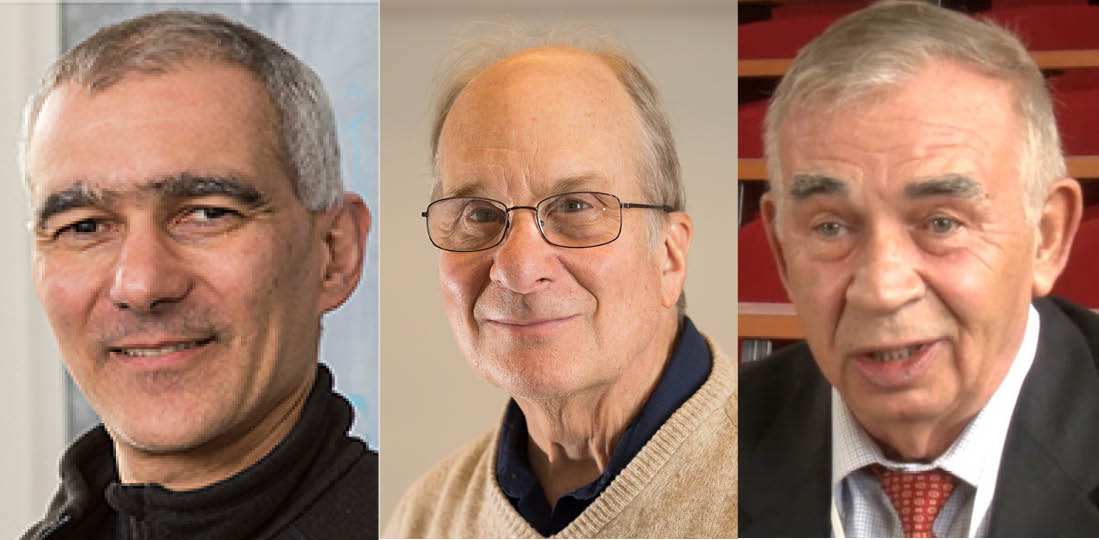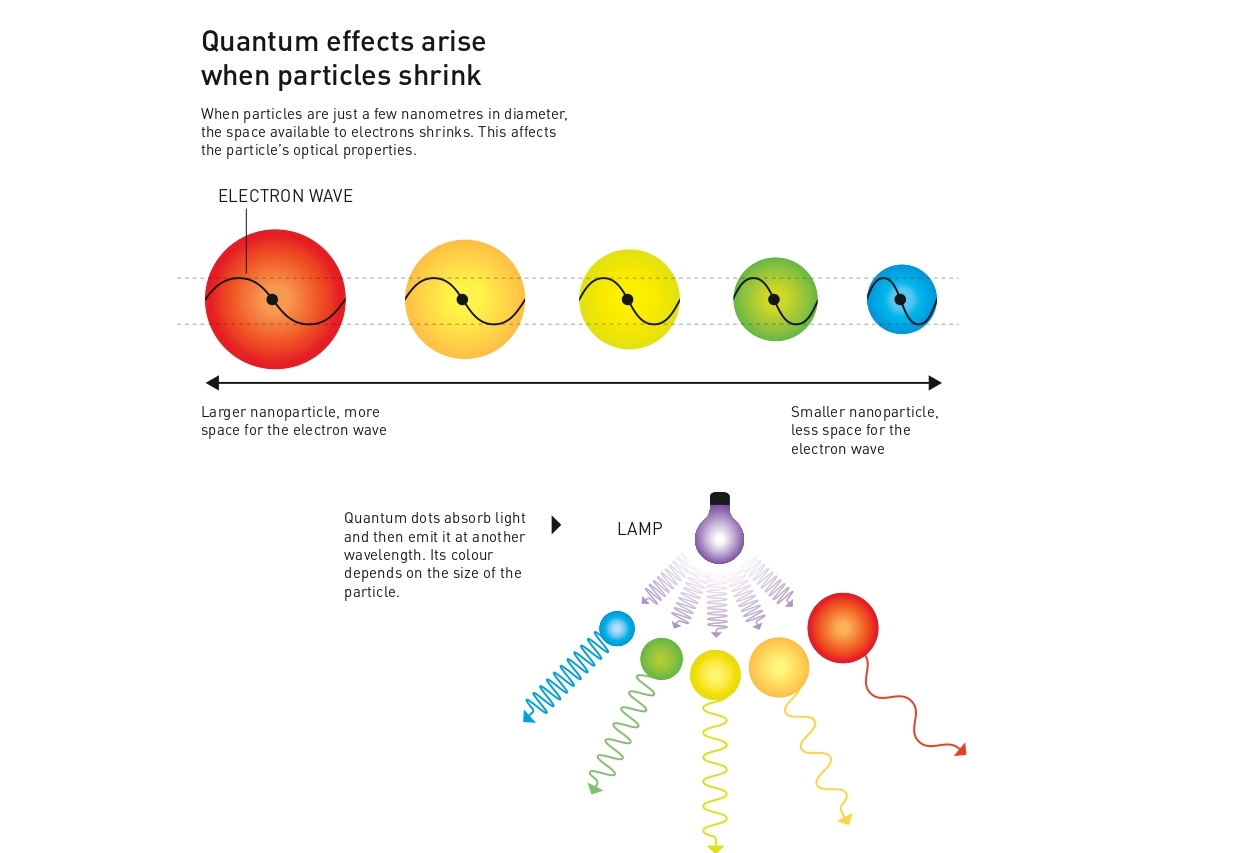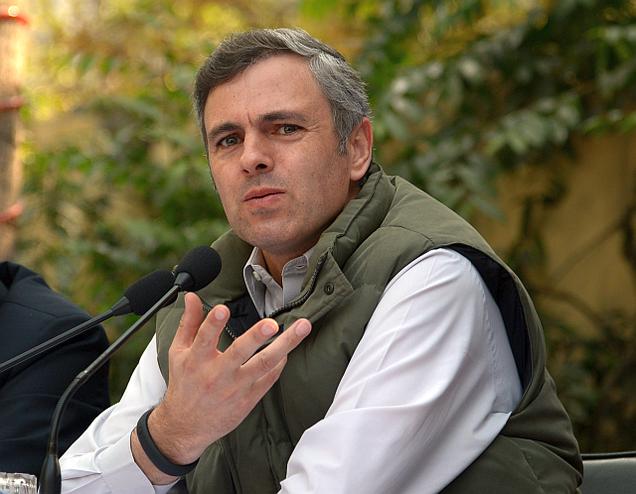SRINAGAR: The Royal Swedish Academy of Sciences has decided to award the Nobel Prize in Chemistry 2023 to Moungi G. Bawendi Massachusetts Institute of Technology (MIT), Cambridge, MA, USA, Louis E Brus Columbia University, New York, NY, USA and Alexei I Ekimov Nanocrystals Technology Inc., New York, NY, USA “for the discovery and synthesis of quantum dots”

The Nobel Prize in Chemistry 2023 rewards the discovery and development of quantum dots, nanoparticles so tiny that their size determines their properties. These smallest components of nanotechnology now spread their light from televisions and LED lamps, and can also guide surgeons when they remove tumour tissue, among many other things.
Everyone who studies chemistry learns that an element’s properties are governed by how many electrons it has. However, when matter shrinks to nano-dimensions quantum phenomena arise; these are governed by the size of the matter. The Nobel Laureates in Chemistry 2023 have succeeded in producing particles so small that their properties are determined by quantum phenomena. The particles, which are called quantum dots, are now of great importance in nanotechnology.

“Quantum dots have many fascinating and unusual properties. Importantly, they have different colours depending on their size,” says Johan Åqvist, Chair of the Nobel Committee for Chemistry.
Physicists had long known that in theory size-dependent quantum effects could arise in nanoparticles, but at that time it was almost impossible to sculpt in nanodimensions. Therefore, few people believed that this knowledge would be put to practical use.
However, in the early 1980s, Alexei Ekimov succeeded in creating size-dependent quantum effects in coloured glass. The colour came from nanoparticles of copper chloride and Ekimov demonstrated that the particle size affected the colour of the glass via quantum effects.
A few years later, Louis Brus was the first scientist in the world to prove size-dependent quantum effects in particles floating freely in a fluid.
In 1993, Moungi Bawendi revolutionised the chemical production of quantum dots, resulting in almost perfect particles. This high quality was necessary for them to be utilised in applications.
Quantum dots now illuminate computer monitors and television screens based on QLED technology. They also add nuance to the light of some LED lamps, and biochemists and doctors use them to map biological tissue.
Quantum dots are thus bringing the greatest benefit to humankind. Researchers believe that in the future they could contribute to flexible electronics, tiny sensors, thinner solar cells and encrypted quantum communication – so we have just started exploring the potential of these tiny particles.
Moungi G. Bawendi, born 1961 in Paris, France. PhD 1988 from University of Chicago, IL, USA. Professor at Massachusetts Institute of
Technology (MIT), Cambridge, MA, USA.
Louis E. Brus, born 1943 in Cleveland, OH, USA. PhD 1969 from Columbia University, New York, NY, USA. Professor at Columbia University, New York, NY, USA.
Alexei I. Ekimov, born 1945 in the former USSR. PhD 1974 from Ioffe Physical-Technical Institute, Saint Petersburg, Russia. Formerly Chief Scientist at Nanocrystals Technology Inc., New York, NY, USA.
They added colour to nanotechnology
“Toto, I’ve a feeling we’re not in Kansas anymore,” is a classic quote from the film The Wizard of Oz. Twelve-year-old Dorothy faints onto her bed when her house is swept away by a powerful tornado, but when the house lands again and she steps outside the door, her dog Toto in her arms, everything has changed. Suddenly she is in a magical, technicolour world.
If an enchanted tornado were to sweep into our lives and shrink everything to nano dimensions, we would almost certainly be as astonished as Dorothy in the land of Oz. Our surroundings would be dazzlingly colourful and everything would change. Our gold earrings would suddenly glimmer in blue, while the gold ring on our finger would shine a ruby red. If we tried to fry something on the gas hob, the frying pan might melt. And our white walls – whose paint contains titanium dioxide – would start generating lots of reactive oxygen species.
Size matters on the nanoscale In the nanoworld, things really do behave differently. Once the size of matter starts to be measured in millionths of a millimetre, strange phenomena start to occur – quantum effects – that challenge our intuition. The 2023 Nobel Laureates in Chemistry have all been pioneers in the exploration of the nanoworld. In the early 1980s, Louis Brus and Alexei Ekimov succeeded in creating – independently of each other – quantum dots, which are nanoparticles so tiny that quantum effects determine their characteristics. In 1993, Moungi Bawendi revolutionised the methods for manufacturing quantum dots, making their quality extremely high – a vital prerequisite for their
use in today’s nanotechnology.
Thanks to the work of the laureates, humanity is now able to utilise some of the peculiar properties of the nanoworld. Quantum dots are now found in commercial products and used across many scientific disciplines, from physics and chemistry to medicine – but we are getting ahead of ourselves. Let’s uncover the background to the Nobel Prize in Chemistry 2023
For decades, quantum phenomena in the nanoworld were just a prediction When Alexei Ekimov and Louis Brus produced the frst quantum dots, scientists already knew that
they could – in theory – have unusual characteristics. In 1937, the physicist Herbert Fröhlich had already predicted that nanoparticles would not behave like other particles. He explored the theoretical consequences of the famous Schrödinger equation, which shows that when particles become extremely small there is less space for the material’s electrons. In turn, the electrons – which are both waves and particles – are squeezed together. Fröhlich realised that this would result in drastic changes to the material’s properties.
Researchers were fascinated by this insight and, using mathematical tools, they succeeded in predicting numerous size-dependent quantum efects. They also worked to try to demonstrate them in reality, but this was easier said than done because they needed to sculpt a structure that was about a million times smaller than a pinhead.
Few people thought quantum effects could be utilised Still, in the 1970s, researchers did succeed in making such a nanostructure. Using a type of molecular beam, they created a nano-thin layer of coating material on top of a bulk material. Once the assembly was complete, they were able to show that the coating’s optical properties varied depending on how thin it was, an observation that matched the predictions of quantum mechanics.
This was a major breakthrough, but the experiment required very advanced technology. Researchers needed both an ultra-high vacuum and temperatures close to absolute zero, so few people expected that quantum mechanical phenomena would be put to practical use. However, now and again science offers up the unexpected and, this time, the turning point was due to studies of an ancient invention: coloured glass.
A single substance can give glass different colours The oldest archaeological fnds of coloured glass are from several thousand years ago. Glassmakers have tested their way to an understanding of how glass can be produced in all the colours of the rainbow. They added substances such as silver, gold and cadmium and then played with diferent temperatures to produce beautiful shades of glass.
In the nineteenth and twentieth centuries, when physicists started to investigate the optical properties of light, the glassmakers’ knowledge was put to use. Physicists could use coloured glass to flter out selected wavelengths of light. To optimise their experiments, they started to produce glass themselves, which led to important insights. One thing they learned was that a single substance could result in completely diferently coloured glass. For example, a mixture of cadmium selenide and cadmium sulphide could make glass turn either yellow or red – which one it became depended on how much the molten glass was heated and how it was cooled. Eventually, they were also able to show that the colours
came from particles forming inside the glass and that the colour depended on the particles’ size.
This was more or less the state of the knowledge at the end of the 1970s, when one of this year’s laureates, Alexei Ekimov, a recent doctoral graduate, started working at the S. I. Vavilov State Optical Institute in what was then the Soviet Union.
Alexei Ekimov maps the mysteries of coloured glass The fact that a single substance could result in diferent coloured glass interested Alexei Ekimov, because it is actually illogical. If you paint a picture in cadmium red, it will always be cadmium red, unless you mix in other pigments. So how could a single substance give glass of diferent colours? During his doctoral degree, Ekimov studied semiconductors – important components in microelectronics.
In this field, optical methods are used as diagnostic tools for assessing the quality of semiconducting material. Researchers shine light on the material and measure the absorbance. This reveals what substances the material is made from and how well-ordered the crystal structure is. Ekimov was familiar with these methods, so he began using them to examine coloured glass. After some initial experiments, he decided to systematically produce glass that was tinted with copper chloride. He heated the molten glass to a range of temperatures between 500°C and 700°C, varying the heating time from 1 hour to 96 hours. Once the glass had cooled and hardened, he X-rayed it.
The scattered rays showed that tiny crystals of copper chloride had formed inside the glass and the manufacturing process afected the size of these particles. In some of the glass samples they were only about two nanometres, in others they were up to 30 nanometres.
Interestingly, it turned out that the glass’ light absorption was afected by the size of the particles.
The biggest particles absorbed the light in the same way that copper chloride normally does, but the smaller the particles, the bluer the light that they absorbed. As a physicist, Ekimov was well acquainted with the laws of quantum mechanics and quickly realised that he had observed a size dependent quantum effect (fgure 3).
This was the first time someone had succeeded in deliberately producing quantum dots – nanoparticles that cause size-dependent quantum effects. In 1981, Ekimov published his discovery in a Soviet scientific journal, but this was difficult for researchers on the other side of the Iron Curtain to access. Therefore, this year’s next Nobel Prize Laureate in Chemistry – Louis Brus – was unaware of Alexei Ekimov’s discovery when, in 1983, he was the first researcher in the world to discover size-dependent quantum effects in particles foating freely in a solution.
Brus shows that the strange properties of particles are quantum effects Louis Brus was working at Bell Laboratories in the US, with the long-term aim of making chemical
reactions happen using solar energy. To achieve this, he was using particles of cadmium sulphide, which can capture light and then utilise its energy to drive reactions. The particles were in a solution and Brus made them very small, because this gave him a larger area on which the chemical reactions could take place; the more a material is chopped up, the greater the surface area it will expose to its surroundings.
During his work with these tiny particles, Brus noticed something strange – their optical properties changed after he had left them on the lab bench for a while. He guessed that this could be because the particles had grown, so to confrm his suspicions he produced cadmium sulphide particles that were just about 4.5 nanometres in diameter. Brus then compared the optical properties of these newly made particles with those of the larger particles, which had a diameter of about 12.5 nanometres. The larger particles absorbed light at the same wavelengths as cadmium sulphide generally does, but the smaller particles had an absorption that shifted towards blue (fgure 3).
Just like Ekimov, Brus understood that he had observed a size-dependent quantum efect. He published his discovery in 1983 and then started investigating particles made from a range of other substances. The pattern was the same – the smaller the particles, the bluer the light they absorbed.
The periodic table gained a third dimension This is where you may be tempted to ask “Why does it matter if a substance’s absorbance is slightly more towards blue? Why is that so amazing?” Well, the optical changes revealed that the substance’s characteristics had completely changed. A substance’s optical properties are governed by its electrons. The same electrons also govern the substance’s other properties, such as its ability to catalyse chemical reactions or conduct electricity. So when researchers detected the changed absorption they understood that, in principle, they were looking at an entirely new material.
If you want to understand the magnitude of this discovery, you can imagine that the periodic table suddenly gained a third dimension. An element’s properties are not only afected by the number of electron shells and how many electrons there are it the outer shell but, at the nano level, size also matters. A chemist who wanted to develop a new material thus had another factor to play with – of course this tickled researchers’ imaginations!
There was just one problem. The methods Brus had used to fabricate nanoparticles generally resulted in unpredictable quality. Quantum dots are tiny crystals (figure 2) and the ones that could be produced at that time often contained defects. They were also of varying sizes. It was possible to control how the crystals were formed so the particles had a given average size, but if researchers wanted all the particles in a solution to be about the same size they had to sort them after they were made. This was a difficult process that hindered development.
Moungi Bawendi revolutionises the production of quantum dots
This was a problem that this year’s third Nobel Prize Laureate in Chemistry decided to solve. Moungi Bawendi started his postdoctoral training at Louis Brus’ laboratory in 1988, where intensive work was underway to improve the methods used to produce quantum dots. Using a range of solvents, temperatures and techniques, they experimented with a variety of substances to try and form well-organised nanocrystals. And the crystals were getting better, but were still not good enough. However, Bawendi did not give up. When he started working as a research leader at the Massachusetts Institute of Technology, MIT, he continued his eforts to produce higher quality nanoparticles. The major breakthrough came in 1993, when the research group injected the substances that would form nanocrystals into a heated and carefully chosen solvent. They injected as much of the substances as
was necessary to precisely saturate the solution, which led to tiny crystal embryos beginning to form simultaneously (fgure 4).
Then, by dynamically varying the temperature of the solution, Moungi Bawendi and his research group succeeded in growing nanocrystals of a specifc size. During this phase, the solvent helped give the crystals a smooth and even surface.
The nanocrystals that Bawendi produced were almost perfect, giving rise to distinct quantum effects. Because the production method was easy to use, it was revolutionary – more and more chemists started working with nanotechnology and began to investigate the unique properties of quantum dots.
The luminous properties of quantum dots find commercial uses Thirty years later, quantum dots are now an important part of nanotechnology’s toolbox and are found in commercial products. Researchers have primarily utilised quantum dots to create coloured light. If quantum dots are illuminated with blue light, they absorb the light and emit a diferent
colour. Modifying the size of the particles makes it possible to determine exactly what colour they should glow (fgure 3).
The luminous properties of quantum dots are utilised in computer and television screens based on QLED technology, where the Q stands for quantum dot. In these screens, blue light is generated using the energy-efcient diodes that were recognised with the Nobel Prize in Physics 2014. Quantum dots are used to change the colour of some of the blue light, transforming it into red or green. This makes it possible to produce the three primary colours of light needed in a television screen.
Similarly, quantum dots are used in some LED lamps to adjust the cold light of the diodes. The light can then become as energising as daylight or as calming as the warm glow from a dimmed bulb. The light from quantum dots can also be used in biochemistry and medicine. Biochemists attach quantum dots to biomolecules to map cells and organs. Doctors have begun investigating the potential use of quantum dots to track tumour tissue in the body. Chemists instead use the catalytic properties of quantum dots to drive chemical reactions.
Quantum dots are thus bringing the greatest benefit to humankind, and we have just begun to explore their potential. Researchers believe that in the future quantum dots can contribute to flexible electronics, miniscule sensors, slimmer solar cells and perhaps encrypted quantum communication. One thing is certain – there is a lot left to learn about amazing quantum phenomena. So if there’s a 12-year-old Dorothy out there looking for adventure, the nanoworld has a great deal to offer.
Chemistry Nobel In History
114 Nobel Prizes in Chemistry have been awarded since 1901.
25 chemistry prizes have been shared by two laureates.
8 women have been awarded the chemistry prize so far. Of the 189 individuals awarded the Nobel Prize in Chemistry, eight are women so far. Two of these eight women, Marie Curie and Dorothy Crowfoot Hodgkin, were awarded unshared chemistry prizes.
2 people, Frederick Sanger and Barry Sharpless, have been awarded the chemistry prize twice.
35 years was the age of the youngest chemistry laureate ever, Frédéric Joliot, who was awarded the Nobel Prize in 1935. To date, the youngest Nobel Prize laureate in chemistry is Frédéric Joliot, who was 35 years old when he was awarded the chemistry prize in 1935, together with his wife, Irène Joliot-Curie.
97 was the age of the oldest chemistry laureate, and oldest laureate ever, John B. Goodenough.
The Curies were the most successful “Nobel Prize family”. The husband-and-wife partnership of Marie Curie and Pierre Curie were awarded the 1903 Nobel Prize in Physics. Marie Curie herself was awarded the Nobel Prize a second time, receiving the 1911 Nobel Prize in Chemistry. Marie and Pierre Curie’s eldest daughter, Irène Joliot-Curie, was awarded the 1935 Nobel Prize in Chemistry, together with her husband, Frédéric Joliot. The younger daughter, Ève Curie, worked for the UNICEF and was married to Henry R. Labouisse. He accepted the Nobel Peace Prize on behalf of UNICEF in 1965.















